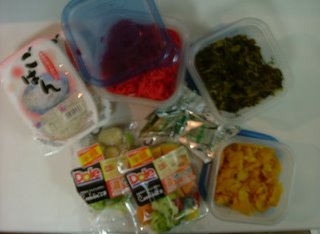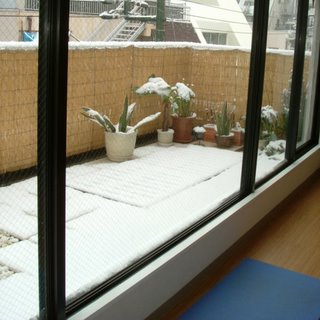While Gwen and I were on a zazen retreat last summer, we noticed how much healthier and lighter we felt on the 3 bowl diet. I don't know why, but the balance between carbs, protiens, hot, cold, plain and flavorful is just perfect for settling the mind down. After that, we determined to eat "monk food" a few times a week.
But, of course, life gets busy, and it's easy to wander into a restaurant or fast food place when you're hungry and the grocery shopping hasn't been done. So, it is in the spirit of compromise that I offer the modern, microwaveable, 3 bowl meal.

 a balanced, nutritious, and possibly radioactive, meal. Itadakimasu!
a balanced, nutritious, and possibly radioactive, meal. Itadakimasu!P.S. Recently I went on a Zen retreat and made this movie about the Oryoki tradition. Check it out!
Patrick
Yoga Garden


